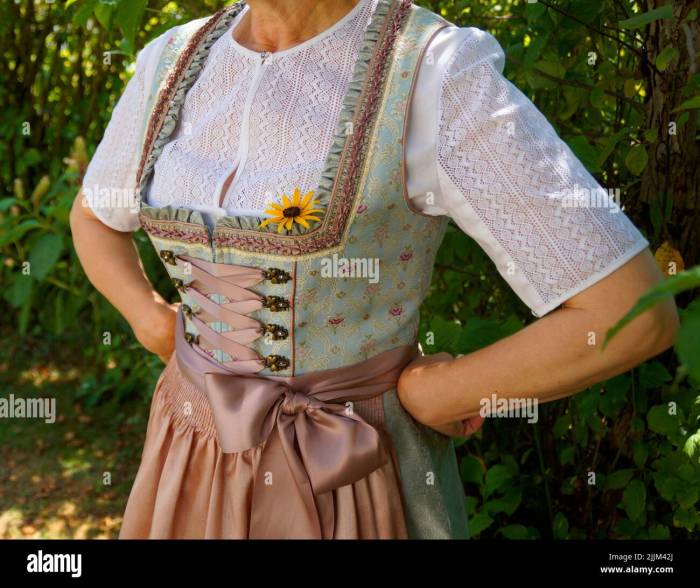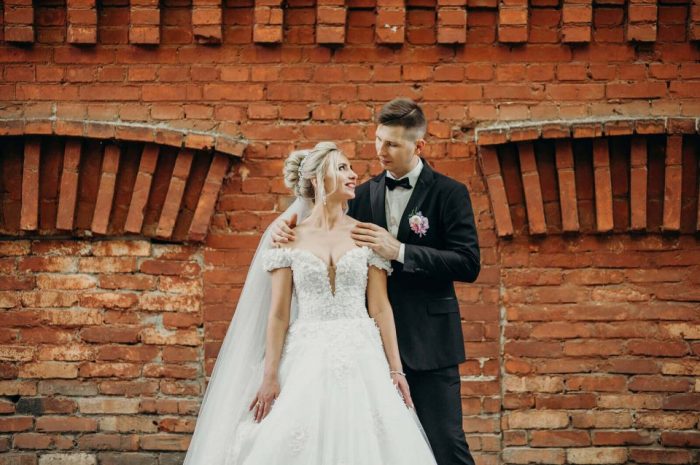A Historical Overview of Traditional German Wedding Dresses
The traditional German wedding dress, far from being a monolithic entity, boasts a rich tapestry of regional variations and stylistic evolutions across centuries. Influenced by both broader European trends and unique local customs, these dresses offer a fascinating glimpse into Germany’s diverse cultural heritage.
Historical Evolution of the Traditional German Wedding Dress
German wedding attire underwent significant transformations throughout history. Eighteenth-century dresses often reflected the Rococo style, characterized by elaborate embellishments, pastel colors, and a focus on luxurious fabrics like silk and velvet. The nineteenth century saw the rise of romanticism, leading to simpler, more flowing silhouettes with an emphasis on delicate lace and embroidery. Early twentieth-century dresses often incorporated Art Nouveau influences, featuring flowing lines and floral motifs.
Regional variations, however, consistently played a vital role in shaping these overarching trends.
Regional Variations in Traditional German Wedding Dresses
Significant differences existed and continue to exist in wedding dress styles across various German regions. The following table highlights some key distinctions between Bavaria, Swabia, and the Rhineland.
| Region | Fabric | Embellishments | Silhouette |
|---|---|---|---|
| Bavaria | Linen, velvet, brocade | Lace, embroidery, ribbons | Full-skirted, often with a bodice |
| Swabia | Linen, wool, silk | Embroidery, often featuring floral motifs | More fitted bodice, possibly with a simpler skirt |
| Rhineland | Silk, satin, lace | Lace, ribbons, sometimes pearls | More varied, reflecting both simpler and more elaborate styles |
Symbolism and Meaning of Design Elements

Source: alamy.com
Many design elements in traditional German wedding dresses held symbolic significance. These elements often reflected cultural beliefs about marriage, fertility, and prosperity.
- Lace: Symbolized purity, innocence, and delicacy.
- Embroidery: Represented the bride’s skill and dedication, often incorporating floral motifs symbolizing fertility and abundance.
- Specific Colors: White represented purity, while other colors like blue (faithfulness) or red (passion) held regional significance.
- Ribbons: Symbolized binding and the joining of two lives.
- Pearls: Represented purity, longevity, and good fortune in marriage.
Modern Interpretations of the Traditional German Wedding Dress

Source: co.uk
Contemporary designers frequently draw inspiration from traditional German wedding dresses, incorporating elements like intricate embroidery, regional-specific fabrics, and traditional silhouettes into modern designs. This often involves a creative blend of classic elements and contemporary aesthetics.
For instance, a modern interpretation of a Bavarian-style dress might feature a fitted bodice in a modern fabric like silk crepe, paired with a full, flowing skirt incorporating traditional Bavarian embroidery patterns. The overall silhouette could be streamlined, while still retaining the essence of the traditional style. The use of subtle colors, like muted greens or blues, could also update the traditional look.
Traditional German wedding dresses often feature intricate embroidery and lace, reflecting a rich cultural heritage. However, for a more modern, less formal summer celebration, a lighter option might be preferable, perhaps something like a stylish summer wedding cocktail dress. While vastly different in style, both choices ultimately represent a commitment to personal expression within the context of a special occasion, reflecting the bride’s individual taste.
Illustrative Examples of Traditional German Wedding Dresses
Consider three examples of traditional dresses:
Dress 1 (Bavarian): This dress features a rich, dark green velvet bodice, intricately embroidered with gold thread depicting stylized alpine flowers and vines. The full skirt is made of a heavy linen, subtly pleated to create a flowing silhouette. The overall aesthetic is opulent yet grounded, reflecting the region’s rich cultural heritage.
Dress 2 (Swabian): This dress showcases a simpler, more understated elegance. The bodice is made of a fine white linen, adorned with delicate hand-stitched embroidery featuring small, densely packed floral motifs in a muted blue thread. The skirt is made of a lighter linen, slightly gathered at the waist. The overall effect is one of refined simplicity and understated beauty, reflecting Swabian practicality and attention to detail.
Dress 3 (Rhineland): This dress epitomizes a more elaborate style, featuring a flowing silk gown in a pale ivory color. The bodice is fitted, with a low neckline accented by delicate lace. The skirt is full and voluminous, cascading in soft folds. The lace, intricately worked and possibly incorporating small pearls, runs along the neckline and sleeves, adding a touch of opulence to the design.
This style reflects the Rhineland’s history of more ornate and elaborate traditions.
Helpful Answers
What are some common fabrics used in traditional German wedding dresses?
Common fabrics include linen, silk, brocade, and lace, often varying by region and historical period.
How did World War II impact traditional German wedding dress styles?
Post-war austerity led to simpler styles, often utilizing readily available materials and eschewing elaborate embellishments.
Are there any specific colors associated with traditional German wedding dresses?
While white became increasingly popular in the late 19th and 20th centuries, other colors like cream, ivory, and even muted blues or greens were historically common.
Where can I find examples of traditional German wedding dresses today?
Museums specializing in costume history, historical societies, and private collections often showcase these garments. Online resources and historical archives can also provide valuable information.
Are traditional German wedding dresses still worn today?
While not as prevalent as modern styles, some couples incorporate traditional elements into their modern wedding attire, blending old and new.